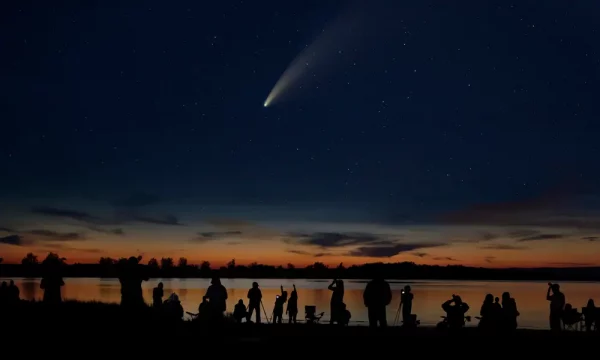
7 Of The Most Famous Comets Discovered By Astronomers
Last Updated: October 25, 2022
Comets are fascinating celestial objects, and many are responsible for the most famous meteor showers on Earth. Here are seven of the most famous comets discovered by astronomers, associated with many historical events, symbols, and tales!
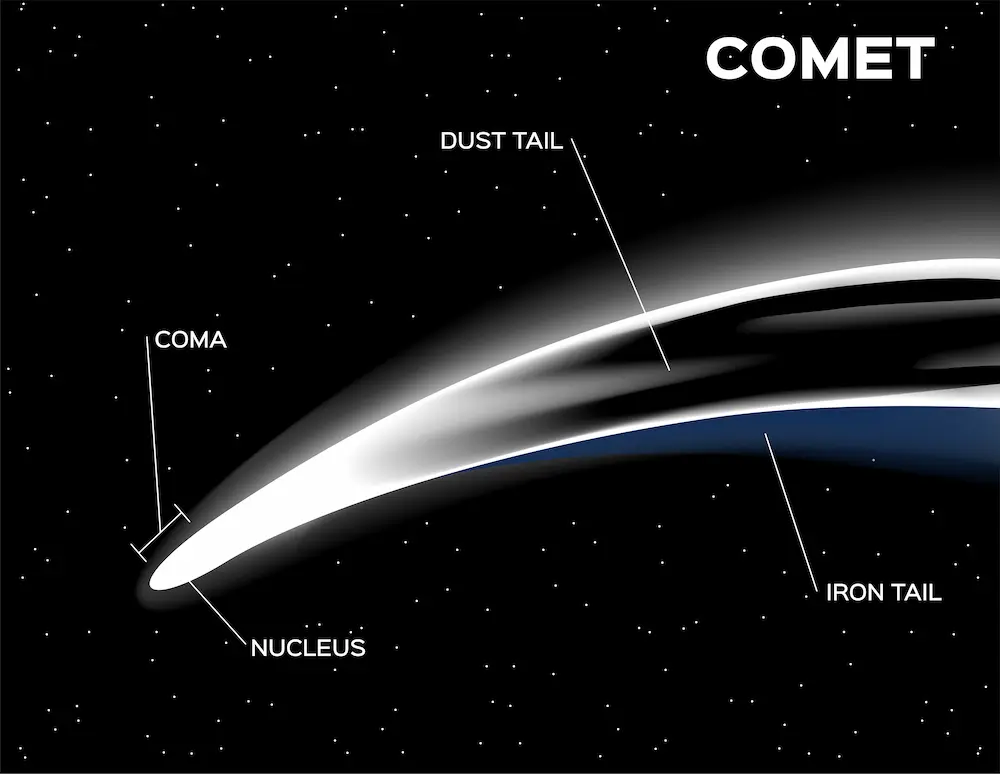
Anatomy of a comet: They are made of a nucleus, coma, dust tail and iron tail.
1. Halley's Comet - Apparition 1682
Halley’s Comet, also called Comet Halley or 1P/Halley, is probably the most famous comet ever observed from our planet. Halley’s Comet is a short-period comet visible every 75 to 79 years and the only one that we can see without technological aid. It is visible for about six months in the night sky when it occurs.
Few people have seen Halley’s Comet twice in their lifetime. However, it is possible. The ancients have observed the well-known comet countless times, and some even suggest it was depicted on the 1066 Bayeux Tapestry. The oldest recording of the comet date as far back as 240 BC. However, the famous English astronomer Edmond Halley understood that previous sky sightings were related to the same comet.
He witnessed the comet in 1682 and predicted its reappearance in 1758 using Newton’s motion laws. His predictions were correct, but unfortunately, he died sixteen years before the comet reappeared. Nonetheless, the comet was named in his honor. Halley’s Comet is 5 miles / 8 kilometers wide and 10 mi / 16 km long. It traveled around the Sun in an elongated orbit and was last seen in February 1986, but we will see it again in 2061.
2. Shoemaker Levy-9 - Apparition 1993
Named after the three astronomers that discovered it in 1993, Shoemaker Levy-9 is among the famous comets that were directly observed by our technology. In 1992, the comet broke apart in 21 fragments and collided with Jupiter in July 1994, which left many scientists speechless as they observed the first extraterrestrial collision in our Solar System.
Due to this collision, the scientific community observed how Jupiter acted as a space debris collector, which may have saved our planet from many other collisions in the past due to its powerful gravitational pull.
The comet was a giant as fragments measured about 1.1 miles / 1.8 kilometers long, which are significantly smaller than the asteroid that wiped out the dinosaurs. However, Shoemaker Levy-9’s effects on Jupiter are still visible today.
As the first active comet observed to be orbiting around another planet, many suspect Shoemaker Levy-9 was captured by Jupiter’s gravity for at least 20 to 30 years before it began to fragment. It collided with the gas giant at a speed of about 37 mi / 60 km per second. The impacts were more visible than Jupiter’s famous Great Red Spot for several months.
3. Hyakutake - Apparition 1996
Not all of the most spectacular comets are first observed by professional astronomers. In fact, Comet Hyakutake was discovered by an amateur Japanese astronomer in 1996. Nicknamed the Great Comet of 1996, the sizeable celestial object was among the closest of its kind that passed near our Earth.
Although the comet was only 2.6 miles / 4.2 kilometers wide, what shocked the scientific community was its enormous tail that spanned 310 million mi / 500 million km from its nucleus. It was the biggest comet’s tail ever observed.
Comet Hyakutake was a once-in-a-lifetime experience as it is a long-period comet. It passes through our solar system once every 17,000 years. However, the comet may return in about 70,000 years due to the giant planets’ gravitational perturbance in our system.
Yuji Hyakutake, an amateur astronomer from southern Japan, observed the comet through a set of binoculars with 150 mm (6 in) objective lenses. It was the brightest comet observed in 20 years and remained visible to the naked eye for about three months.
4. Hale Bopp - Apparition 1997
Discovered by a professional astronomer, Alan Hale, and an amateur astronomer, Thomas Bopp, Comet Hale-Bopp, also known as the Great Comet of 1997, was among the most spectacular comets ever observed in the 90s.
Astronomers first observed the comet in 1995 before appearing visible to the naked eye. It reached a magnitude of 1.8 and was visible for 18 months due to its enormous nucleus, which was twice as big as the Great Comet of 1811.
This giant comet is between 25 to 50 mi / 40 to 80 km in diameter and is a long-period comet. Spectroscopic observations of the comet revealed the presence of several organic chemicals, which added more basis for the panspermia theory.
Hale Bopp made a more significant impact on the general public than Halley’s Comet, as it was the most observed comet in history, thanks to its brightness. Statistics showcase that about 69% of the entire American population at the time had seen the comet.
Besides having the most prominent thoroughly measured nucleus, Hale-Bopp reached a magnitude of 0 for eight consecutive weeks, longer than any other known comet. The famous Shoemaker couple that observed the Shoemaker Levy-9 comet in 1993 was so captivated by this comet’s brightness that they suffered a car accident while on the road observing it.
Carolyn Shomaker’s husband, Gene, sadly died in the crash. Gene’s ashes were sent to the Moon aboard NASA’s Lunar Prospector mission. He had an image of the Hale-Bopp comet placed near his remains, as it was the last comet witnessed by the Shoemaker couple together.
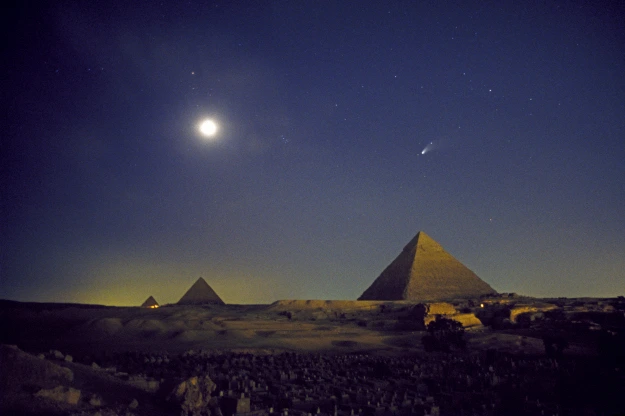
Comet Hale Bopp over the pyramids. Image by John Goldsmith
5. Comet Borrelly - Apparition 1904
Borrelly’s Comet, or Comet Borrelly, was first discovered on December 28, 1904, by the French astronomer Alphonse Borelly. It is a periodic comet, with its latest appearance occurring on February 1, 2022. This 5 miles / 8 kilometers long comet will be observable again on December 11, 2028.
The Deep Space 1 spacecraft visited Comet Borelly in 2001 and revealed the best images and scientific data from a comet at the time. It is visible once every 7 to 8 years and can be easily spotted by amateur astronomers as well.
6. Comet Encke - Apparition 1786
Comet Encke is another periodic comet that can be witnessed frequently, once every 3.3 years. It is the shortest-period bright comet in our solar system. It was first discovered on January 17, 1786, by French astronomer Pierre Mechain. However, it was first recognized as a periodic comet in 1819.
Comet Encke’s nucleus diameter is 3 miles / 4.8 kilometers and has a low albedo, reflecting only 4.6% of the light it receives. It was the first comet to be detected by radar, which occurred in 1980. Many argue that it is the originator of the meteor showers known as the Taurids, which usually occur in June, July, and November and can be seen on Earth and Mercury.
This comet is associated with many cultural events, including the Tunguska event of 1908. Many believe it inspired the swastika symbol due to its shape. It was last seen on June 20, 2020, and will make its next apparition on October 22, 2023.
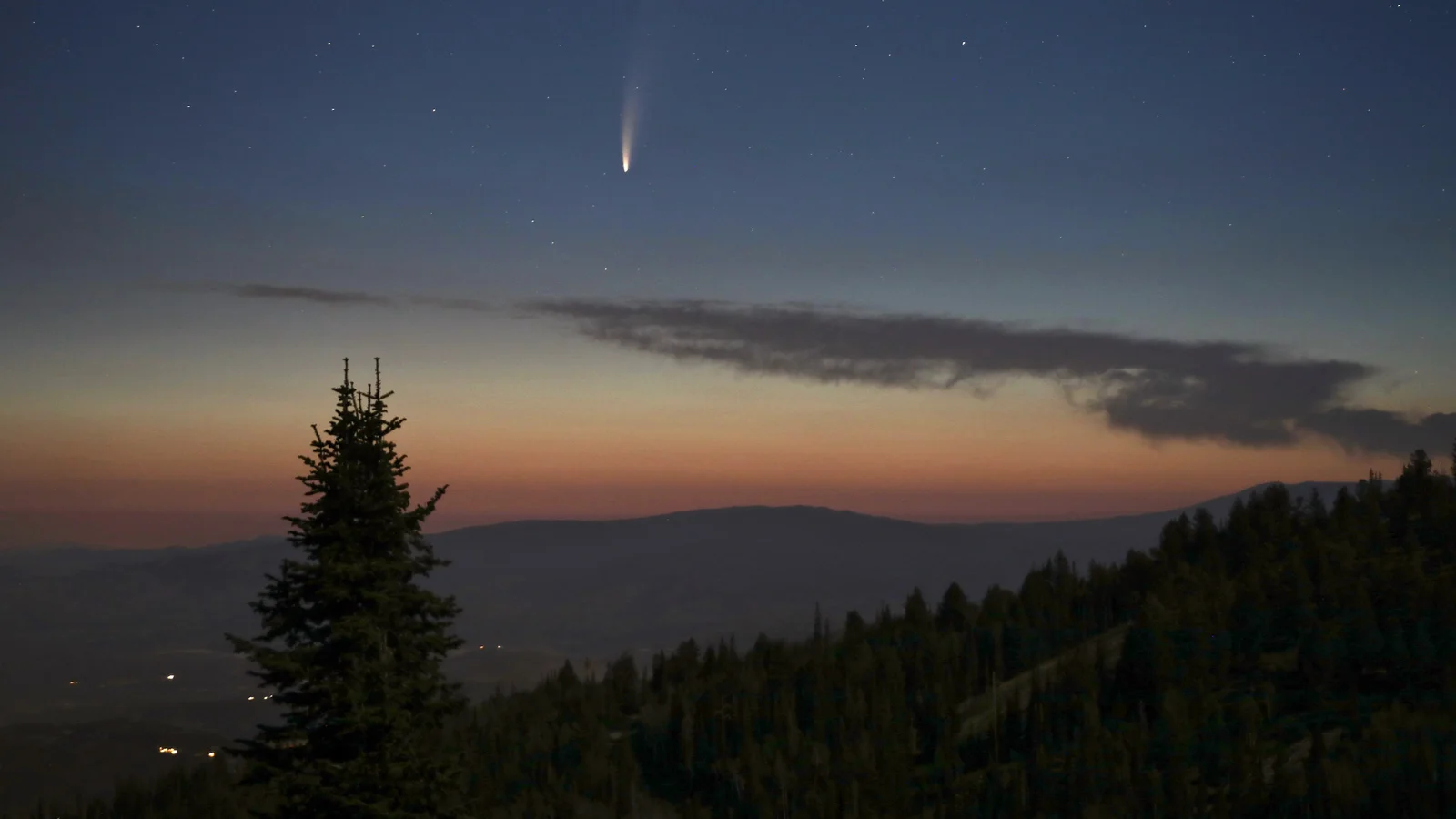
More recently, comet NEOWISE delighted thousands of amateur astronomers around the world.
7. Tempel-Tuttle - Apparition 1865
Comet Tempel-Tuttle was discovered by the German astronomer Willhelm Tempel on December 19, 1865, and the American astronomer Horace Parnell Tuttle on January 6, 1866. It is a periodic comet with an orbital period of 33 years.
Comet Tempel-Tuttle is a classic Halley-type comet, which are comets that have a period of between 20 and 200 years. This comet is responsible for the Leonid meteor showers that occur every 33 years. Its diameter is 2.24 miles / 3.6 kilometers, and its orbit intersects with our planet almost precisely.
The Leonid meteor shower is among the brightest due to this similar orbit. However, they don’t occur immediately. For example, the meteor shower that occurred in November 2009 resulted from our Earth passing through meteors left behind by Tempel-Tuttle from 1466 to 1533.
The last time Tempel-Tuttle was seen in our skies was on February 28, 1998, but you will have the chance to see it again on May 20, 2031.

Written by Hrenciuc Daniel
Hello, my name is Daniel and I am a space enthusiast. I love everything related to space and SCFI, and although I like both Star Wars and Star Trek, I believe we will find something entirely different out there. I am an astronomy writer with a passion for both history and mythology. Each star has its tale. Let me tell you their story!
Wow! There's more to read 🚀
This page is part of our collection of articles about astronomy. If you enjoyed the read, then you’ll love the following articles.

One of the most beautiful aspects of stargazing is looking up to see shooting stars (also known as falling stars) streaking across the night skies.
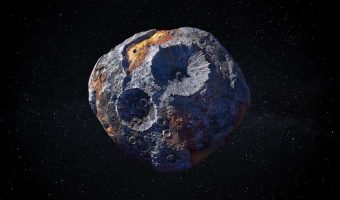

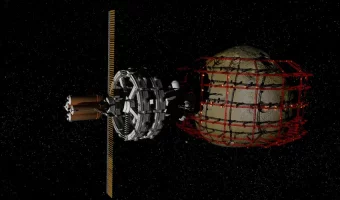
We are much closer to asteroid mining than most people know, and yet, there are still many things that we have to overcome.
